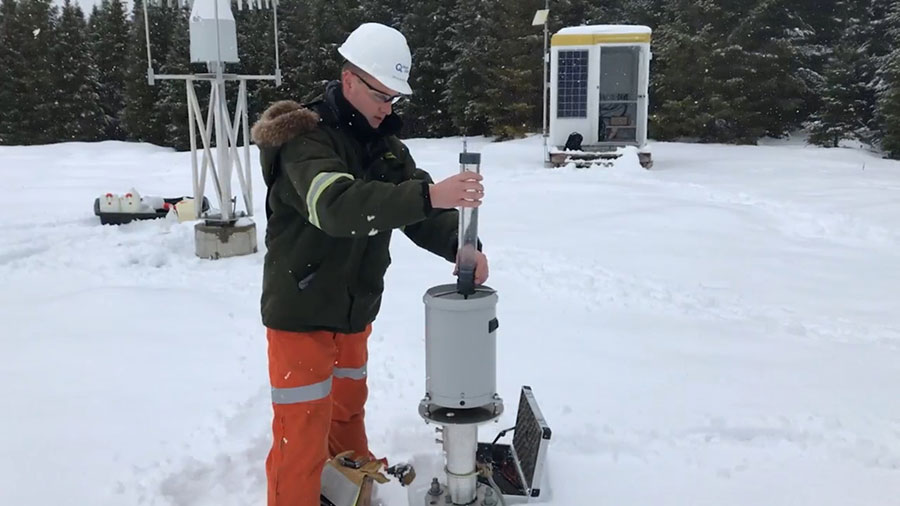How Hydro-Québec installations reduce the impact of spring runoff
Each year, our experts work actively to make the best use of our network of facilities in order to limit the impact of spring runoff on populations.

We are putting our expertise to work to anticipate and limit spring flooding
Throughout the year and especially in the spring, we work in tandem with all stakeholders concerned. It’s part of our mission.
The reservoirs always reduce the extent of the spring runoff
We empty reservoirs in winter so that they can store very large amounts of water in the spring. If these facilities were not there, the water level during the spring runoff would be even higher.


Run-of-river generating stations have no impact on the magnitude of spring runoff
Since they have no reservoirs, they have no way of retaining water. In times of spring runoff, you just have to open the gates to let the river run free.
Frequently asked questions
How do Hydro-Québec facilities affect the magnitude of spring flooding?
What are run-of-river generating stations, and why do they not have a significant impact on spring flooding?
Why is the water level upstream of a run-of-river generating station so low during the spring thaw?
Why does amount of snow and precipitation up north affect the magnitude of spring flooding in regions further south?
Do Hydro-Québec employees only manage water flows during the spring runoff period?
Is Hydro-Québec alone in managing flows on the rivers where it has facilities?
Where can we find information on Québec river water level and flow rates recorded during spring flooding?
During the spring runoff period, is Hydro-Québec responsible for informing the public about flooding risks and what to do in the event of a flood?
Did you know?
- At Hydro-Québec, preparations for the spring thaw last several months, and we rely on meteorologists, engineers, hydrologists and even oceanographers to monitor rivers and lakes.
- Each spring, the reservoirs in southern Québec are brought to their lowest levels so they can retain as much water as possible from the snowmelt.
- In some regions, the amount of water retained represents up to 40% of all the water found on the territory.
- Gouin Reservoir, located in Haute-Mauricie, is nicknamed the “Guardian of the Saint-Maurice River,” and its construction was completed in 1917. Want to know more? Visit the Gouin Reservoir web page.
- The Rivière Saint-Maurice watershed extends over 42,651 km2, an area larger than the Netherlands.
- The Rivière Outaouais watershed is three times larger than the area of Switzerland. A drop of water can take up to three weeks to flow from its source down to the Montréal region.
- There are thirteen main reservoirs in the Rivière Outaouais watershed, and Hydro-Québec owns only four of them. La The Ottawa River Regulation Planning Board
 is responsible for the integrated management of all partner reservoirs.
is responsible for the integrated management of all partner reservoirs. - Hydro-Québec has invented and marketed a device, the GMON, to determine the amount of water contained in the snow cover on a daily basis. Find out more about the GMON device [video in French only]
 .
. - Many hydropower generating stations cannot retain water in the spring. They are called run-of-river generating stations, and the majority of facilities located in southern Québec are of this type.